
How to Use Coin Reader: Examples, Pinouts, and Specs
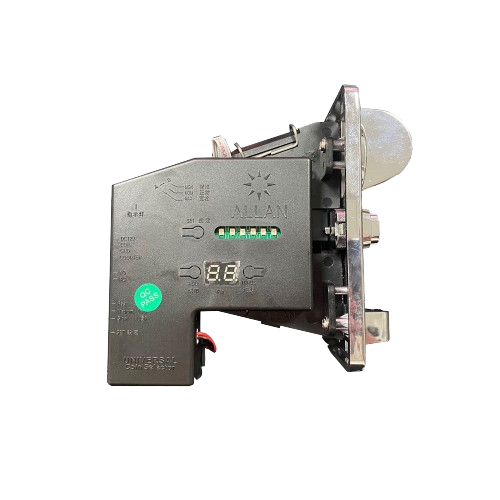
 Design with Coin Reader in Cirkit Designer
Design with Coin Reader in Cirkit DesignerIntroduction
The Allan c-02 Coin Reader is an electronic component designed to identify and validate coins for automated transaction systems. It is widely used in vending machines, arcade games, and other coin-operated devices. The device ensures accurate coin validation, enabling reliable monetary transactions.
Explore Projects Built with Coin Reader
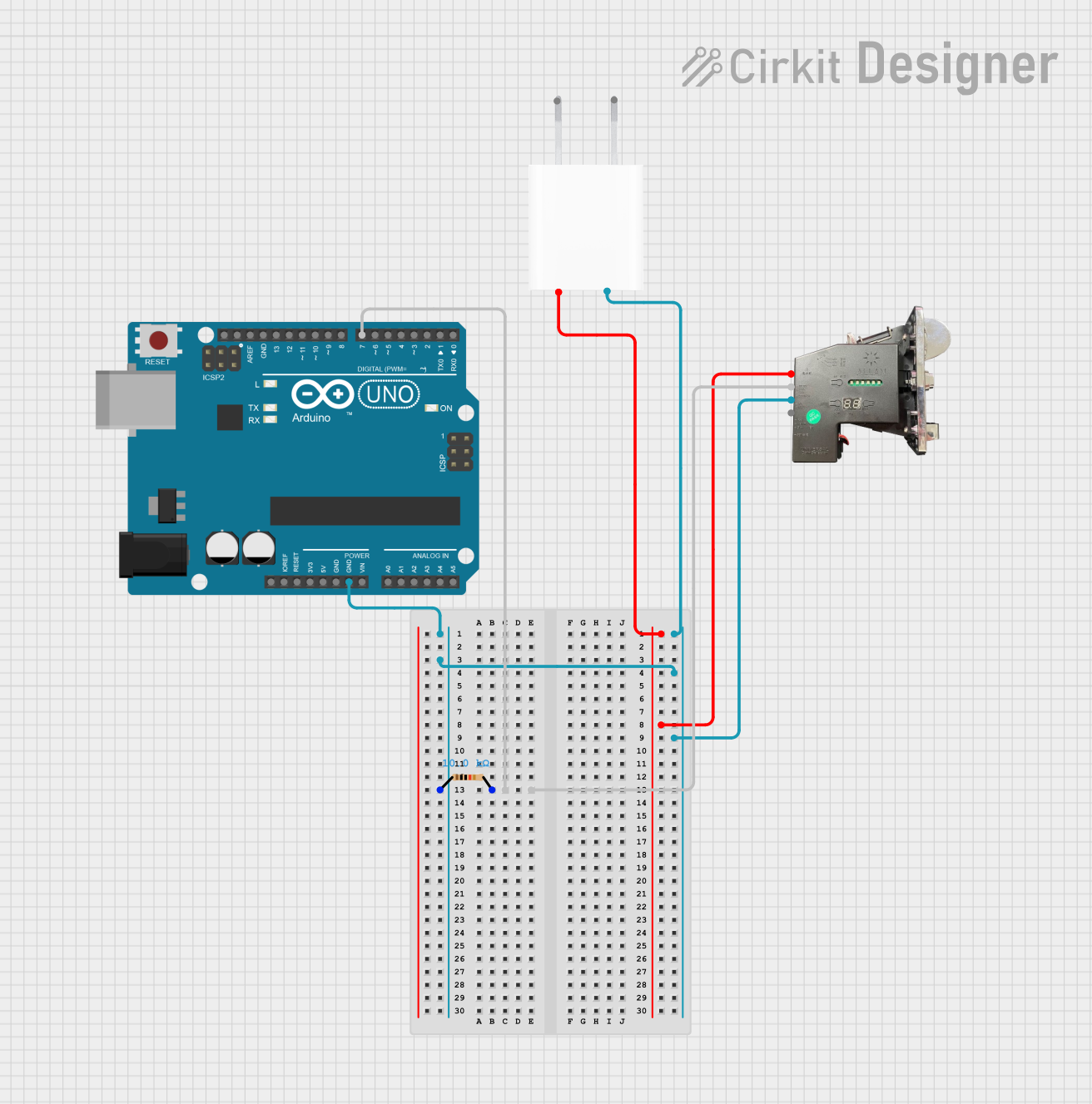
 Open Project in Cirkit Designer
Open Project in Cirkit Designer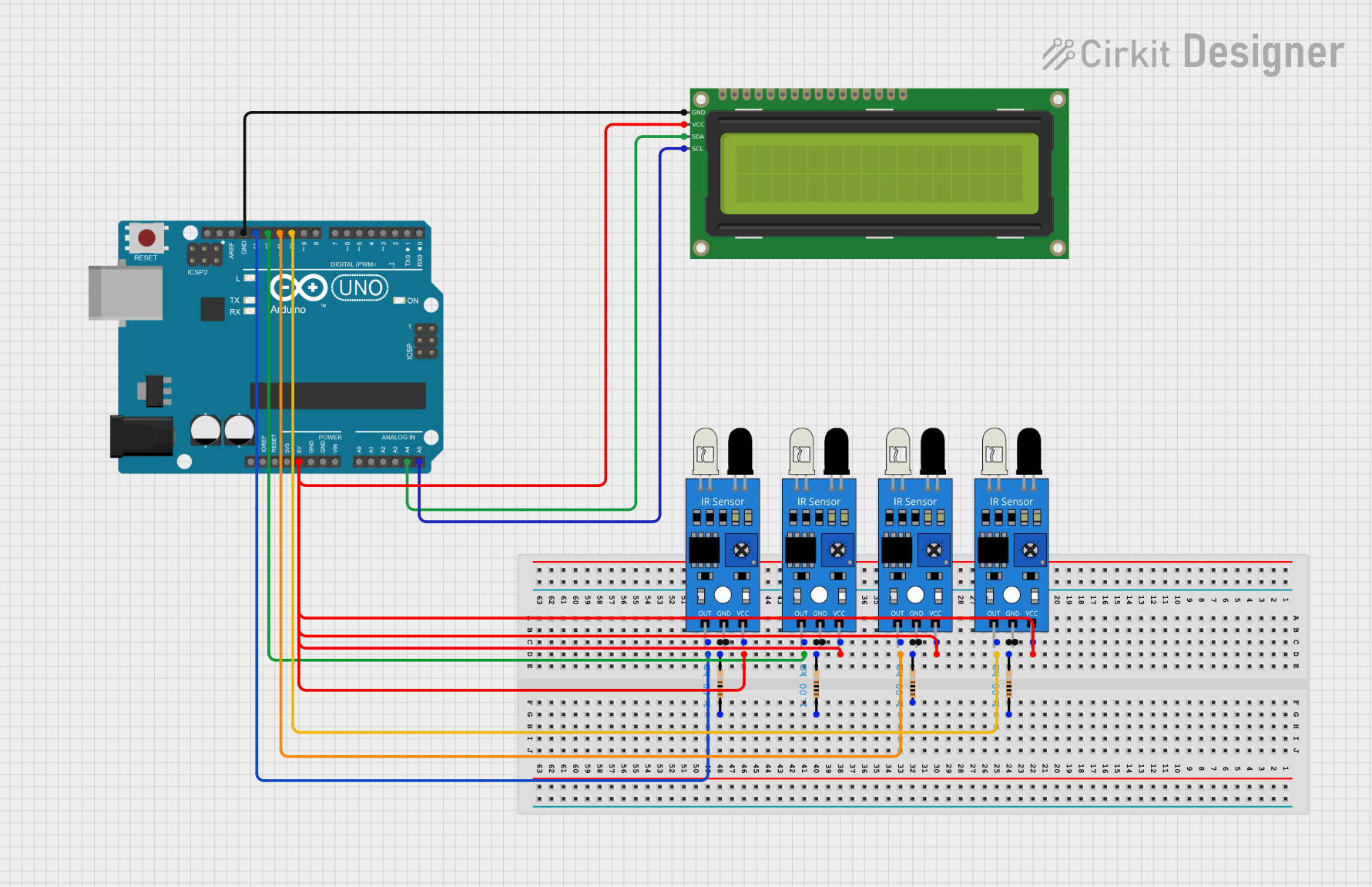
 Open Project in Cirkit Designer
Open Project in Cirkit Designer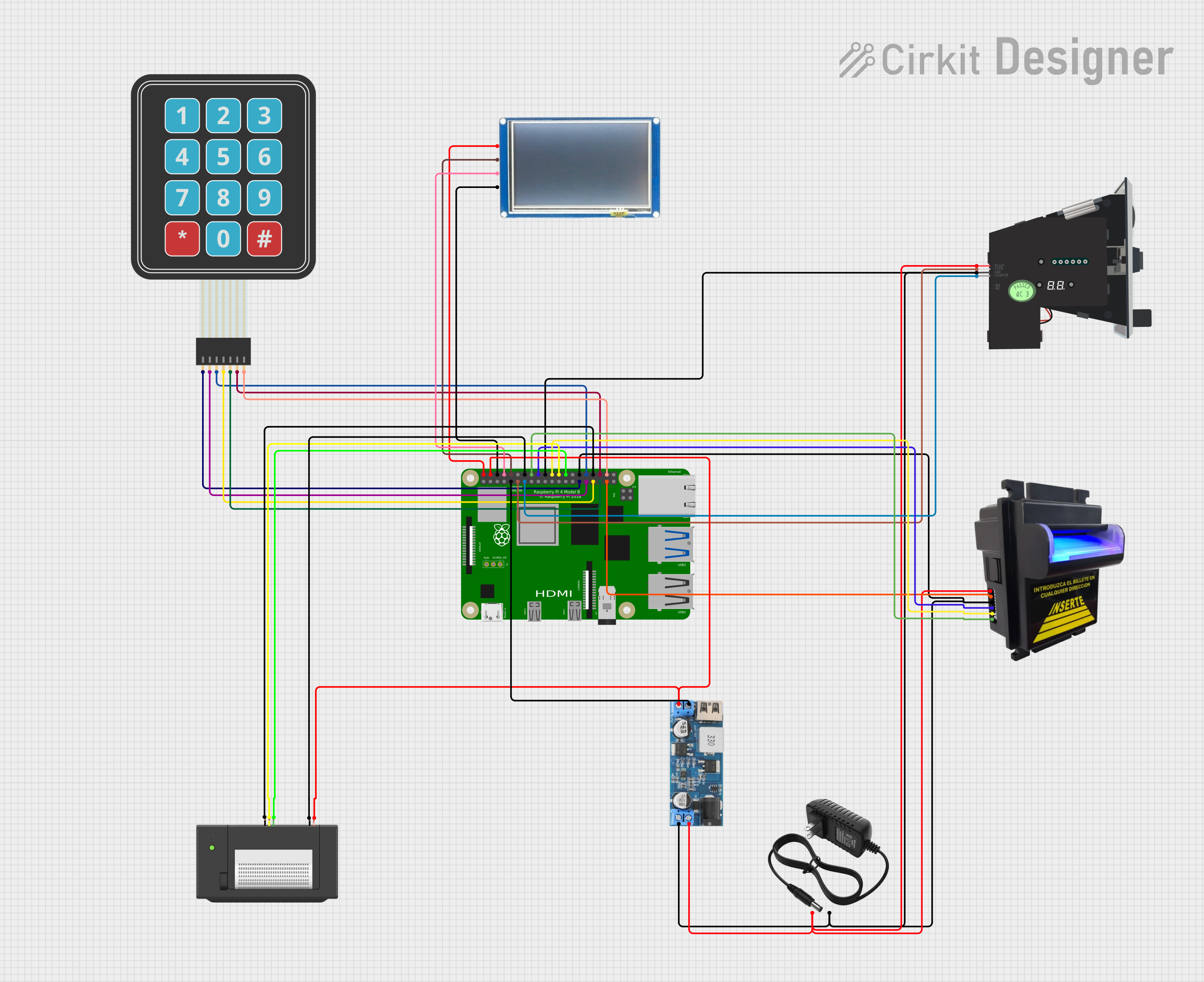
 Open Project in Cirkit Designer
Open Project in Cirkit Designer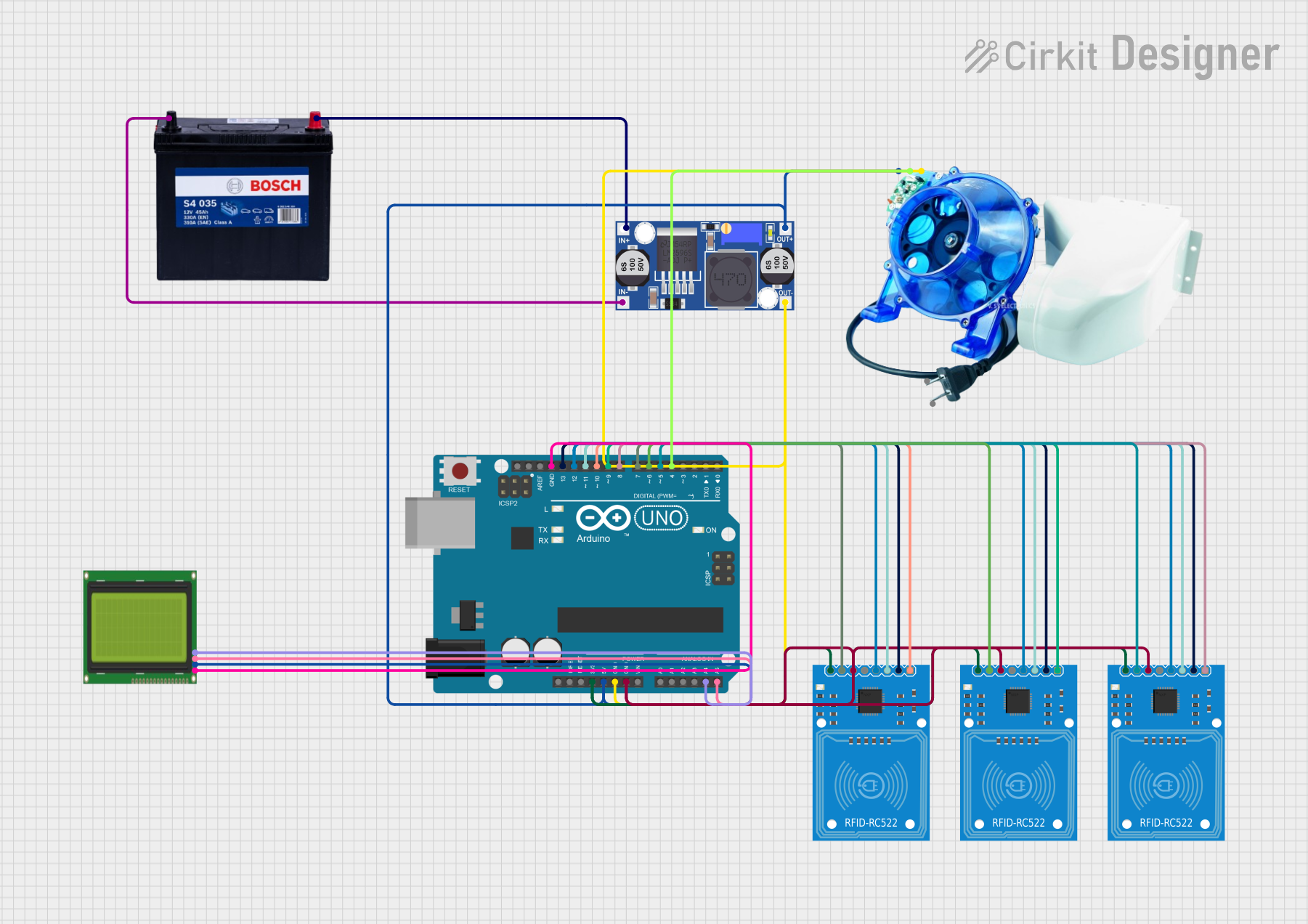
 Open Project in Cirkit Designer
Open Project in Cirkit DesignerExplore Projects Built with Coin Reader

 Open Project in Cirkit Designer
Open Project in Cirkit Designer
 Open Project in Cirkit Designer
Open Project in Cirkit Designer
 Open Project in Cirkit Designer
Open Project in Cirkit Designer
 Open Project in Cirkit Designer
Open Project in Cirkit DesignerCommon Applications and Use Cases
- Vending machines for snacks, beverages, or tickets
- Arcade and gaming machines
- Public transportation ticketing systems
- Coin-operated laundry machines
- Self-service kiosks
Technical Specifications
Key Technical Details
| Specification | Value | Description |
|---|---|---|
| Operating Voltage | 12V DC | The voltage required for operation |
| Quiescent Current | 50mA | Current consumption when idle |
| Peak Operating Current | 450mA | Maximum current during coin validation |
| Coin Diameter Range | 15mm - 29mm | Acceptable coin sizes |
| Coin Thickness Range | 1.2mm - 3.0mm | Acceptable coin thickness |
| Output Type | Pulse | Output signal type upon coin validation |
| Interface | Serial (TTL) | Communication interface with microcontrollers |
Pin Configuration and Descriptions
| Pin Number | Name | Description |
|---|---|---|
| 1 | VCC | Power supply input (12V DC) |
| 2 | GND | Ground connection |
| 3 | COIN | Coin signal output (pulse) |
| 4 | ENABLE | Enable input (active high) |
| 5 | SERIAL_TX | Serial data transmit (TTL level) |
| 6 | SERIAL_RX | Serial data receive (TTL level) |
Usage Instructions
How to Use the Coin Reader in a Circuit
- Power Supply: Connect the VCC pin to a 12V DC power supply and the GND pin to the common ground.
- Enable the Device: The ENABLE pin must be set high (connected to VCC) to activate the coin reader.
- Coin Signal Output: Connect the COIN pin to a digital input on your microcontroller to detect coin insertions.
- Serial Communication: Use the SERIAL_TX and SERIAL_RX pins to communicate with the coin reader using TTL serial communication.
Important Considerations and Best Practices
- Ensure that the power supply is stable and within the specified voltage range to prevent damage.
- Avoid exposing the coin reader to extreme temperatures, moisture, or dust.
- Regularly calibrate the coin reader for accurate coin validation.
- Implement debounce logic in your software to handle the mechanical switch bounce typically associated with coin detection.
Troubleshooting and FAQs
Common Issues
- Coin not recognized: Ensure the coin falls within the specified size range and is not damaged.
- False detections: Check for loose connections and ensure proper grounding.
- No response from the device: Verify that the ENABLE pin is set high and the power supply is correctly connected.
Solutions and Tips for Troubleshooting
- Power Cycle: Turn off the power supply, wait a few seconds, and turn it back on.
- Check Connections: Inspect all connections for proper contact and secure fit.
- Serial Communication: Use a serial monitor to check for communication errors or misconfigurations.
FAQs
Q: Can the Allan c-02 Coin Reader accept multiple currencies? A: It depends on the calibration and programming. Consult the manufacturer's guide for multi-currency support.
Q: How do I clean the coin reader? A: Use a soft, dry cloth to clean the exterior. Do not use liquid cleaners inside the coin path.
Q: What should I do if the coin reader is unresponsive? A: Check the power supply and connections. If the issue persists, contact Allan technical support.
Example Arduino UNO Code
// Example code for interfacing Allan c-02 Coin Reader with Arduino UNO
const int coinPin = 2; // COIN pin connected to digital pin 2
const int enablePin = 3; // ENABLE pin connected to digital pin 3
void setup() {
pinMode(coinPin, INPUT);
pinMode(enablePin, OUTPUT);
digitalWrite(enablePin, HIGH); // Enable the coin reader
Serial.begin(9600); // Start serial communication at 9600 baud rate
}
void loop() {
if (digitalRead(coinPin) == HIGH) {
// Coin detected
Serial.println("Coin Inserted");
// Add your coin handling code here
delay(100); // Debounce delay
}
}
Note: This example assumes a simple digital read for coin detection. For more advanced features like coin value identification, serial communication with the coin reader is required. Please refer to the Allan c-02 technical manual for serial command details.